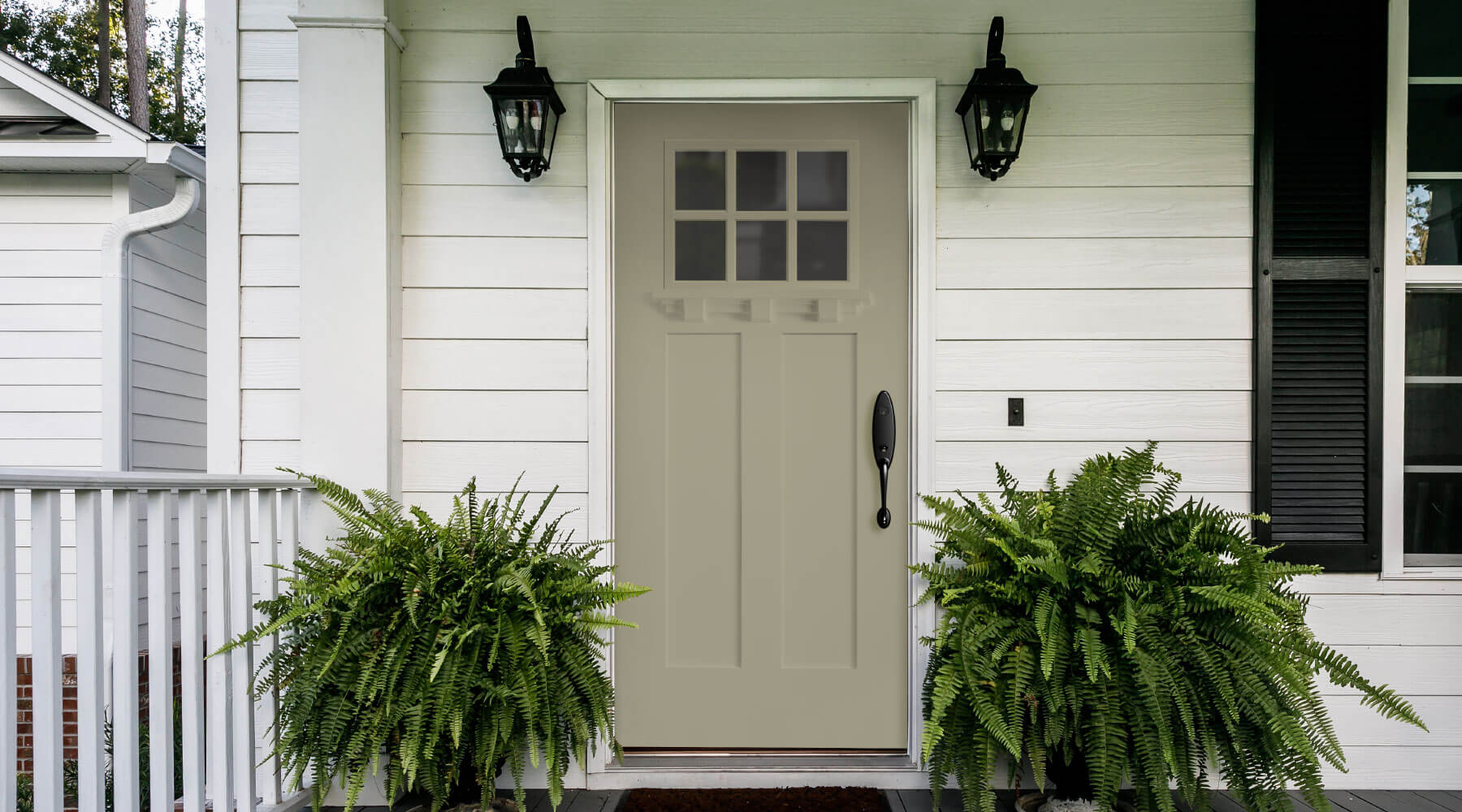You can employ multiple strategies to upgrade the exterior of a home, from landscaping to new paint to repaving the driveway. One of the quickest ways to make a big impression, however, is to install a new exterior door. From sliding glass walls to folding patio doors, these home upgrades make a big impact on aesthetics and home value. This fairly low-cost option not only gives the home additional curb appeal, but it also has several other advantages. Up-to-date materials and construction give newer doors added overall durability and greater insulating properties, which can create an entrance that is not only attractive while being functional as well.
Aesthetics
Choose a door that harmonizes with the architecture of the home, such as six-panel varieties for a colonial house or leaded-glass types for a Victorian. Select a color that coordinates or contrasts with the siding, trim and shutters for a seamless design. Doors in bright hues, such as red, orange or yellow, add visual energy to the entrance. Soft door shades of blue, green or purple give the exterior a subtle, crisp look. Incorporate a door with a transom or sidelights to transform a dark foyer into one with additional natural light.
Security
New technologies often make updated exterior doors more secure than older varieties. Quality fiberglass and steel styles are particularly strong and usually have locking capabilities that surpass older wood doors. Their new designs are layered to resist forced entry. Usually constructed in sections glued together, a modern door is either molded from one piece on each side of the door or fused together by new techniques such as industrial lasers or updated adhesives, which creates a stronger door. Paired with up-to-date bolt-locking systems and wide-angle peepholes, upgrading your door can mean upgrading your home security.
Insulation
Look for energy efficiency when installing a new exterior door. New doors usually have better insulation properties, which allows them to hold heat in during winter and keep it out during summer. Most steel and fiberglass doors are filled with a polyurethane foam insulation and include built-in weather stripping on the bottom to create a barrier to weather elements such as extreme wind, hail or snow. A typical 1-inch-thick, windowless steel or fiberglass door usually has insulating properties that are five times greater than the same-size solid wood door.
Some homeowners can claim tax credits on doors that carry Energy Star labels for 10 percent off the new door cost, or $500 maximum on the purchase price, which can make a more energy-efficient door an attractive option in the short and long term.
Durability
Steel and fiberglass doors have more durability over older wood models. They have reinforced cores that resist warping. The exterior construction and materials also prevent other forms of weathering in terms of chipping, peeling and bubbling. Steel, fiberglass and wood doors often last a lifetime, depending on the quality of the materials used. Their primary difference in their durability is mostly in terms of their maintenance, as wood doors may require more periodic repainting due to their natural material, which is more susceptible to weather damage. Paint fiberglass or steel varieties with an oil-based paint to serve as a barrier to the elements. Alternately, finish a stained-wood door using at least three coats of polyurethane with an ultraviolet formula to protect it for many years to come.




